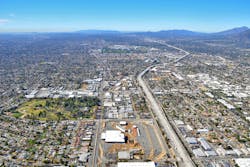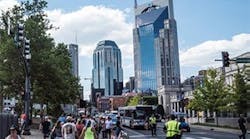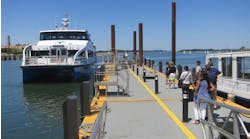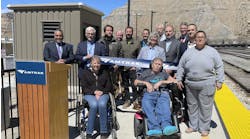The Los Angeles County Metropolitan Transportation Authority (Metro) has released its Annual Report to the Community highlighting a variety of accomplishments made throughout the year, including the opening of two rail line extensions, the launch of two express bus lines and dramatic progress in the construction of three additional rail projects.
“We’re waging a transportation revolution,” said Metro CEO Phillip A. Washington. “We have the opportunity to be bold and tackle not only the infrastructure challenges of today but the challenges of tomorrow.”
The report notes that over the last year, Metro carried 453 million boardings and opened two new rail line extensions: the Gold Line to Azusa and the Expo Line to Santa Monica. Both of these lines exceeded the agency’s most liberal ridership projections, proving that the people of Los Angeles County are ready for more transit options and will take advantage when they become available. With the opening of these extensions, Gold Line ridership is up 12 percent and Expo ridership has increased 43 percent.
“Metro is carrying the banner for real and lasting change in traffic-choked Southern California and there will be no waving of white flags,” said Washington. “Metro is not just looking toward the future, we are designing it.”
The report highlights three major Metro Rail projects currently under construction, including the Regional Connector, the Purple Line subway extension and the Crenshaw/LAX Line, which recently celebrated the halfway point in its construction and is scheduled to open in the fall of 2019.
Equally important is the Airport Metro Connector project, a collaborative endeavor with the Los Angeles World Airports that will add a new transit center at 96th Street and Aviation Boulevard that will provide Crenshaw/LAX Line, Green Line and bus riders an easy transfer to the people mover to LAX terminals that the airport is building.
Metro last year celebrated the 25th anniversary of Metro Rail and the 10th anniversary of the Metro Orange Line, a bus rapid transit (BRT) system between North Hollywood and Warner Center and Chatsworth in the San Fernando Valley. Since opening in 2005, the Orange Line has carried 74 million boarding passengers, making it one of the most successful BRT lines in the nation.
In the past year, Metro also:
- Launched the Silver Line Express BRT line to provide faster and more frequent service between downtown Los Angeles and San Pedro using the ExpressLanes on the 110 freeway.
- Started the NoHo to Pasadena Express Line 501 bus between the Orange Line and Red Line station in North Hollywood, the Burbank media district, downtown Glendale and the Gold Line in Pasadena - the first-ever direct transit connection between the San Fernando and the San Gabriel valleys.
- Began providing bicycles through Metro Bike Share with over 60 bike share stations in downtown Los Angeles.
- Opened a new state-of-the-art and environmentally-friendly Division 13 bus maintenance center in downtown Los Angeles.
The report notes that the agency demonstrated fiscal responsibility with a $142-million decrease in Metro’s $5.7 billion annual budget from the previous year, due primarily to cost controls. The budget also included much-needed funding for State of Good Repair projects.
The report also details the work that was accomplished last year between the agency’s stakeholders, Metro staff and the Metro Board of Directors to develop the agency’s transportation plan for the future that became the basis for Measure M, the sales tax measure on the Nov. 8 ballot to support regional mobility.
“Among our chief goals is to create an infrastructure inheritance for our children and their children,” said Washington. “We want to look beyond ourselves and develop and maintain a mobility network that is still up and running 100 years from now.”




